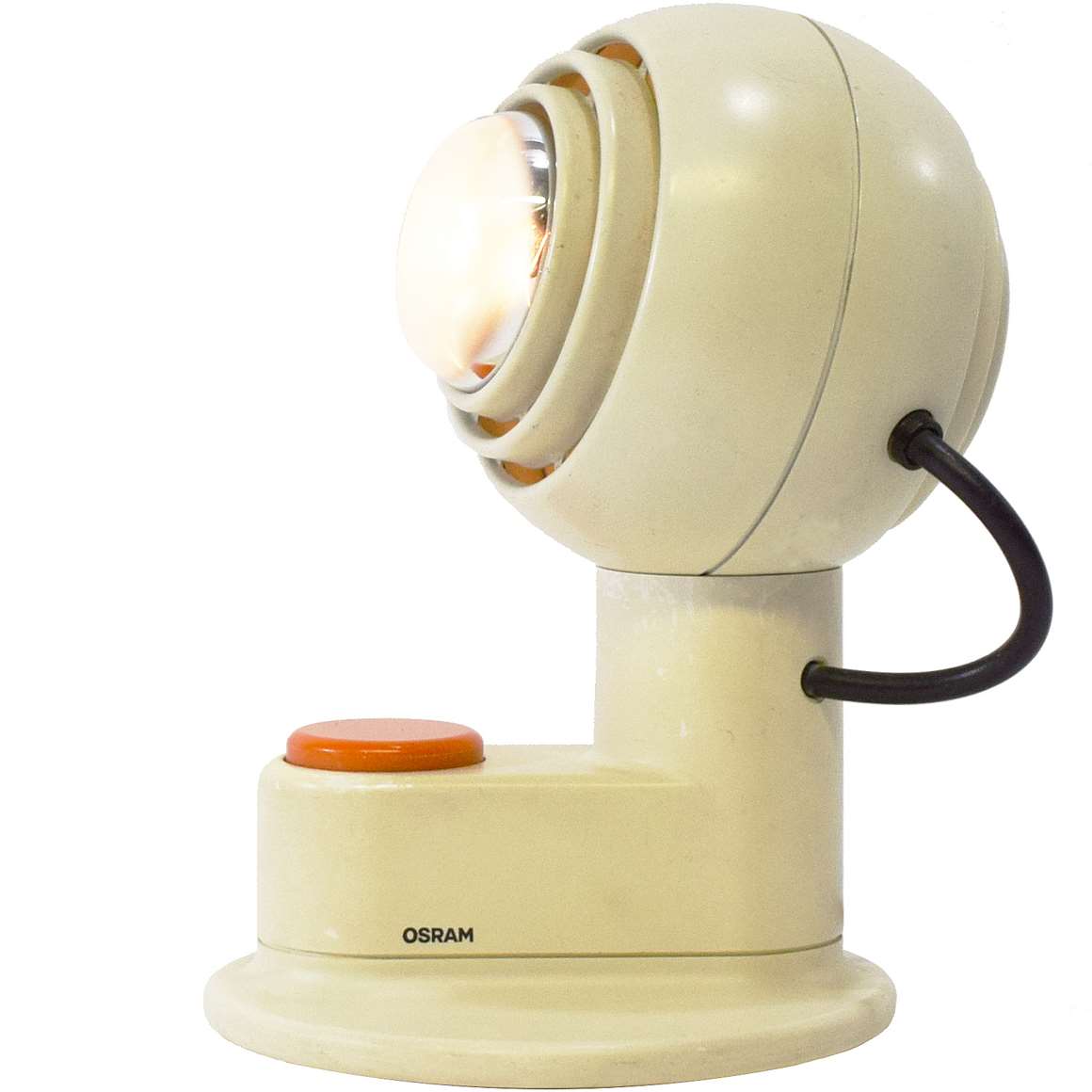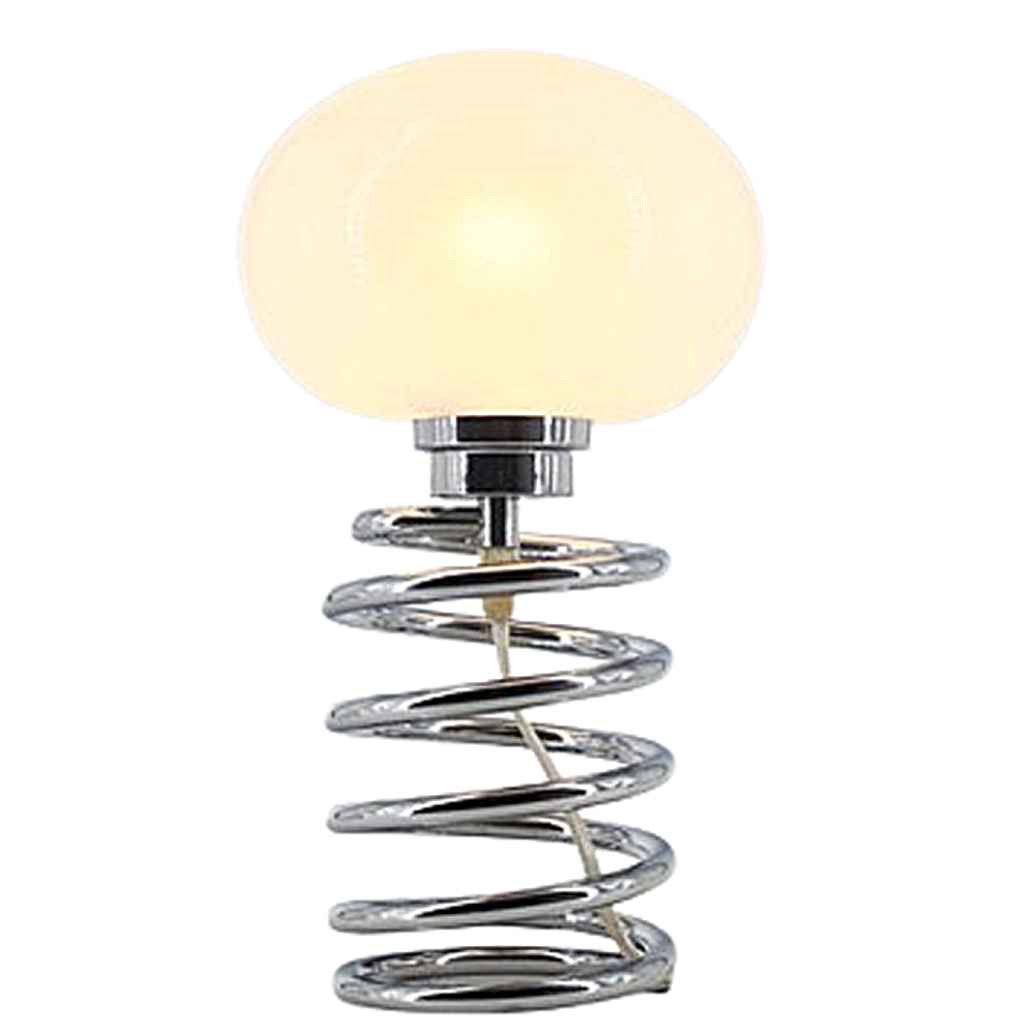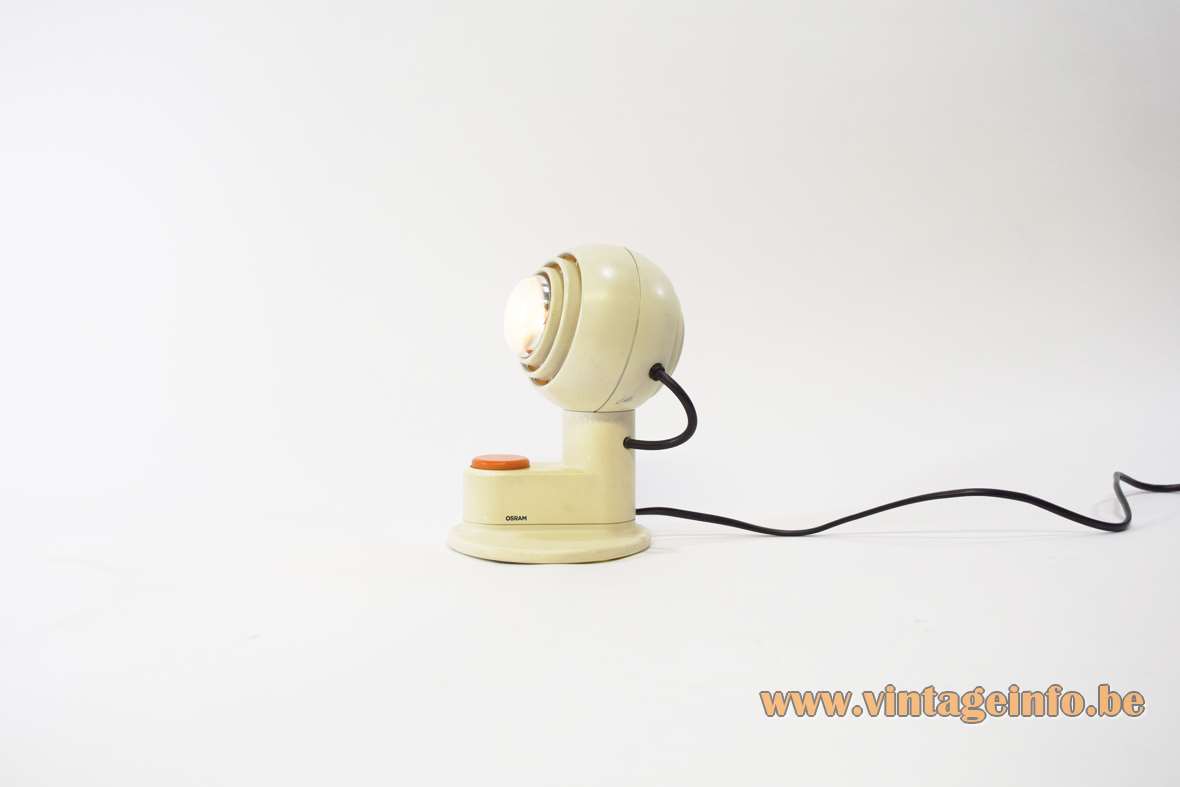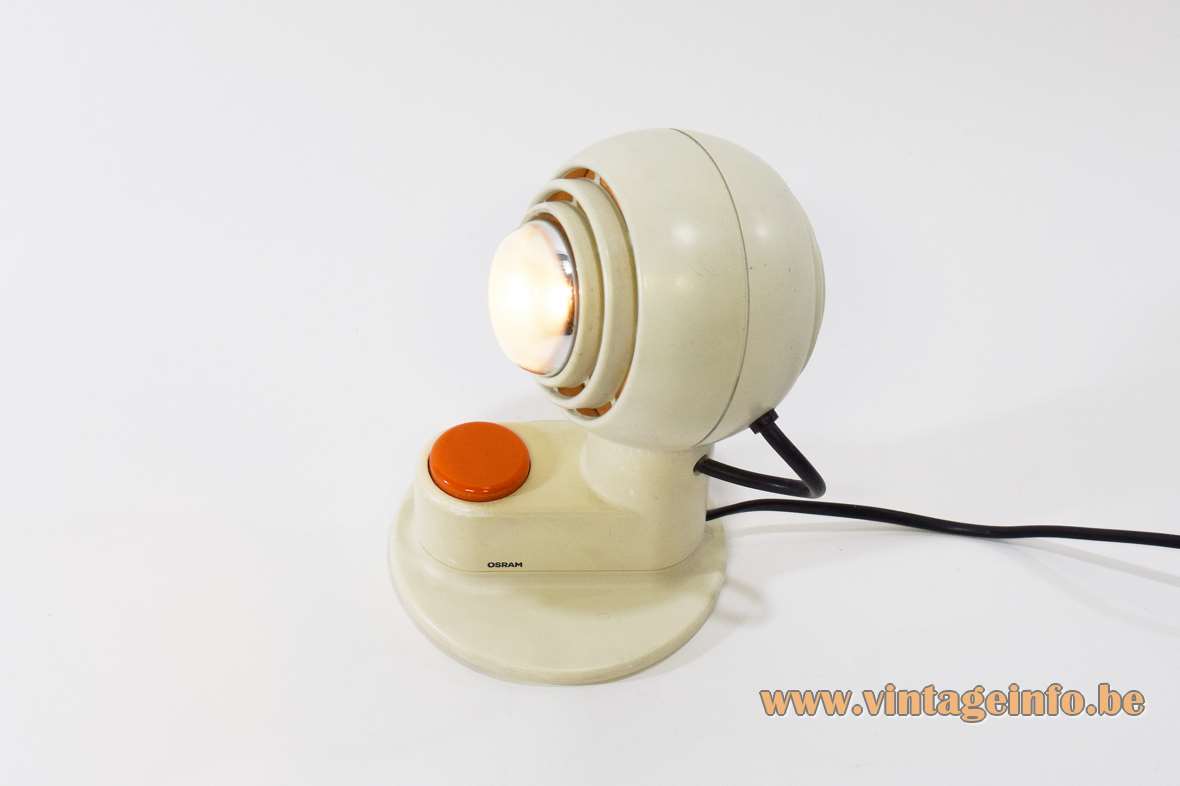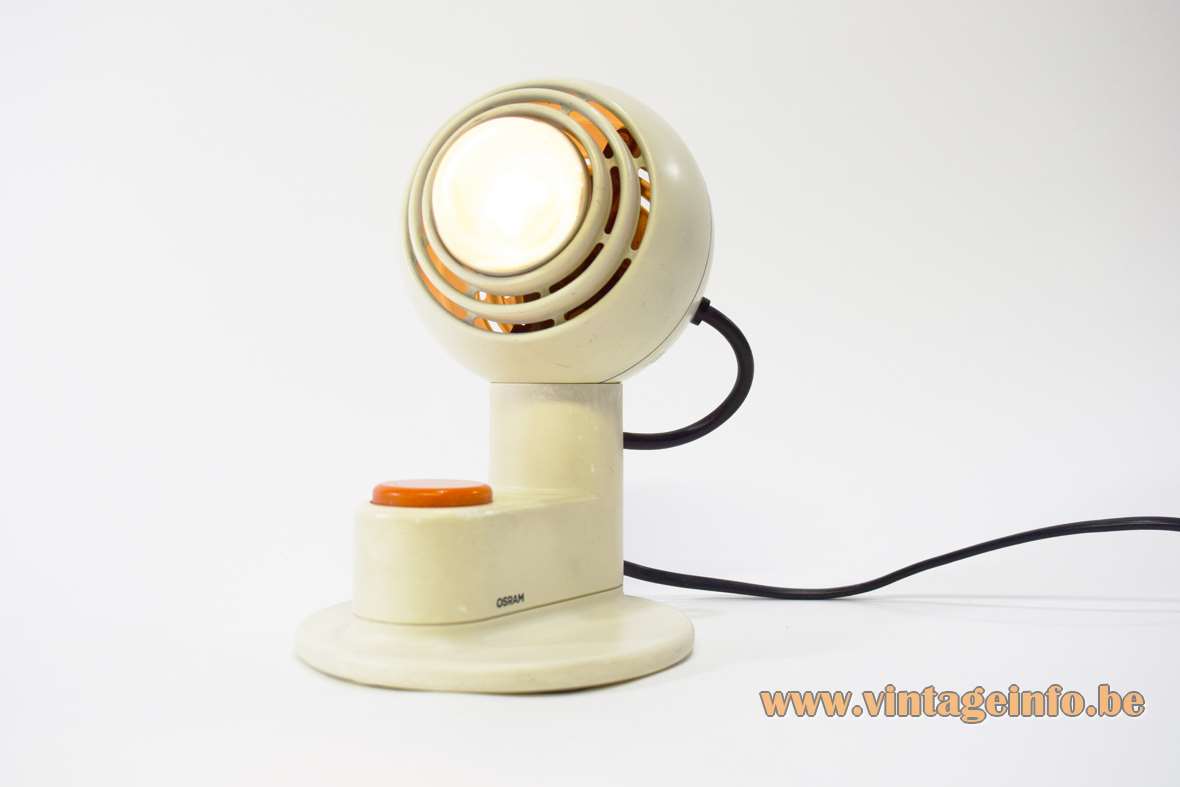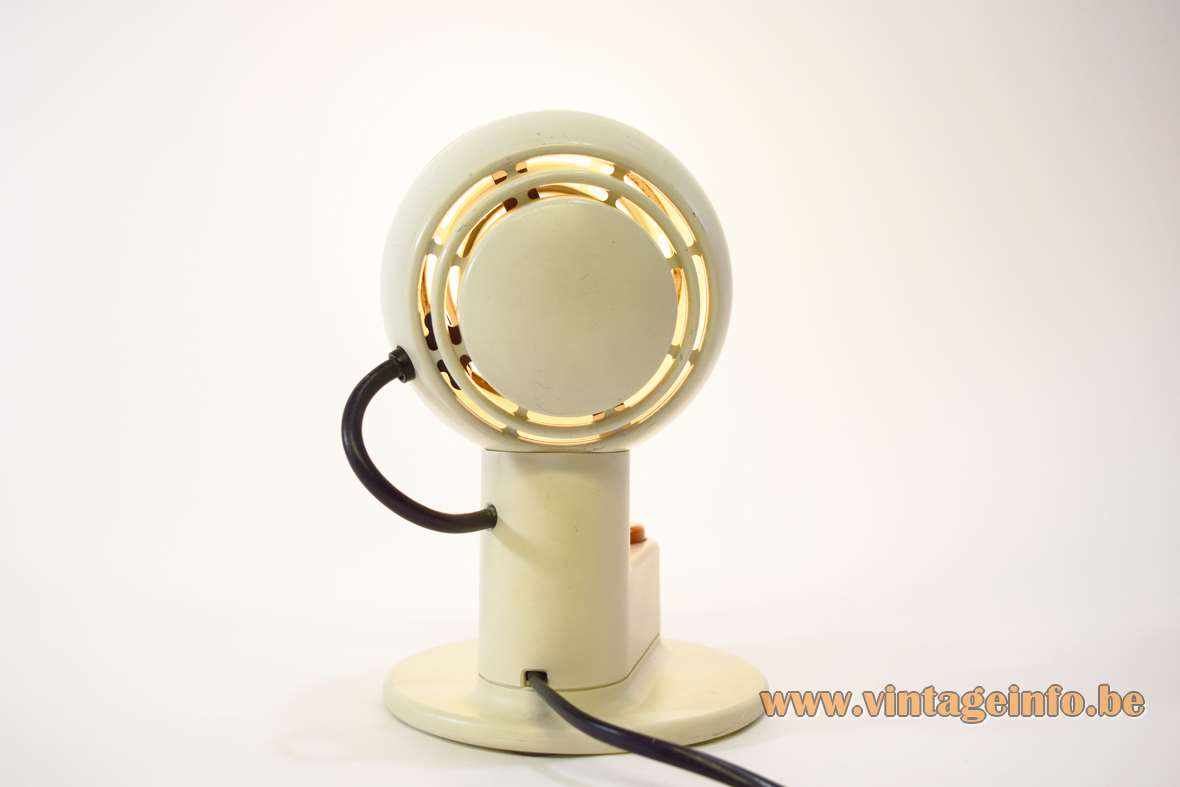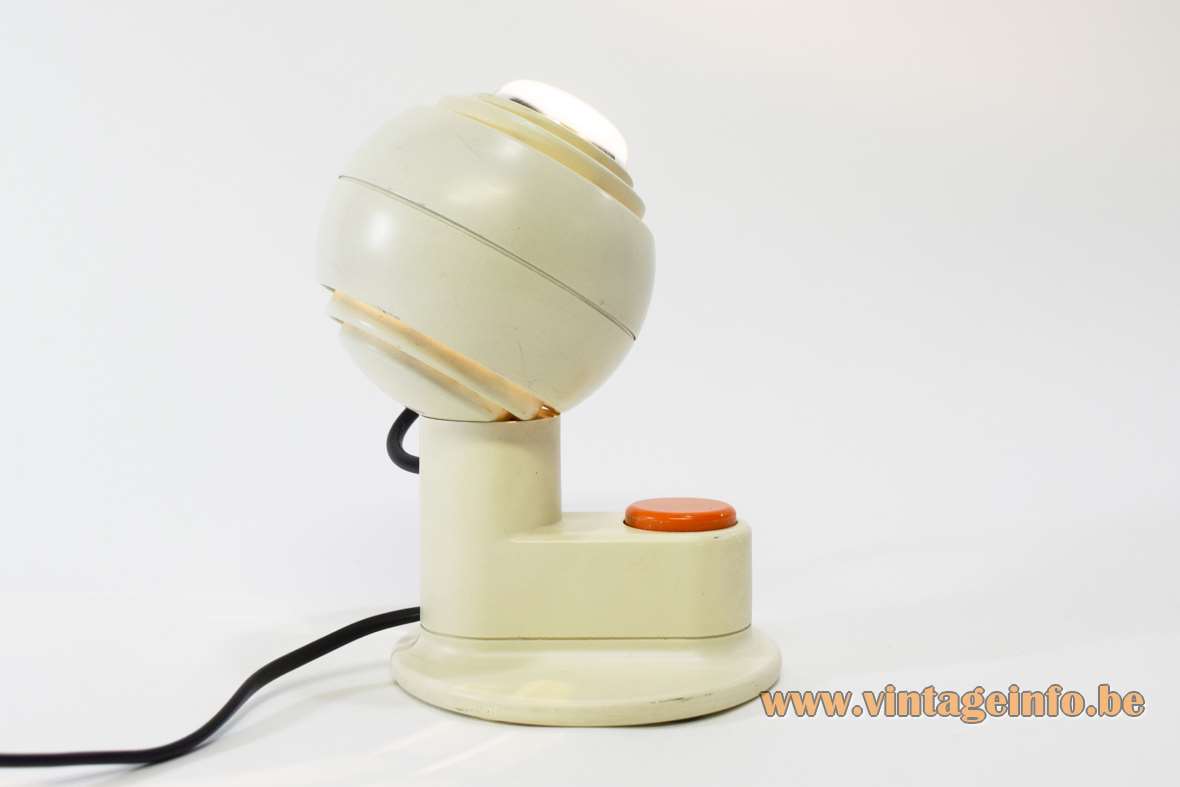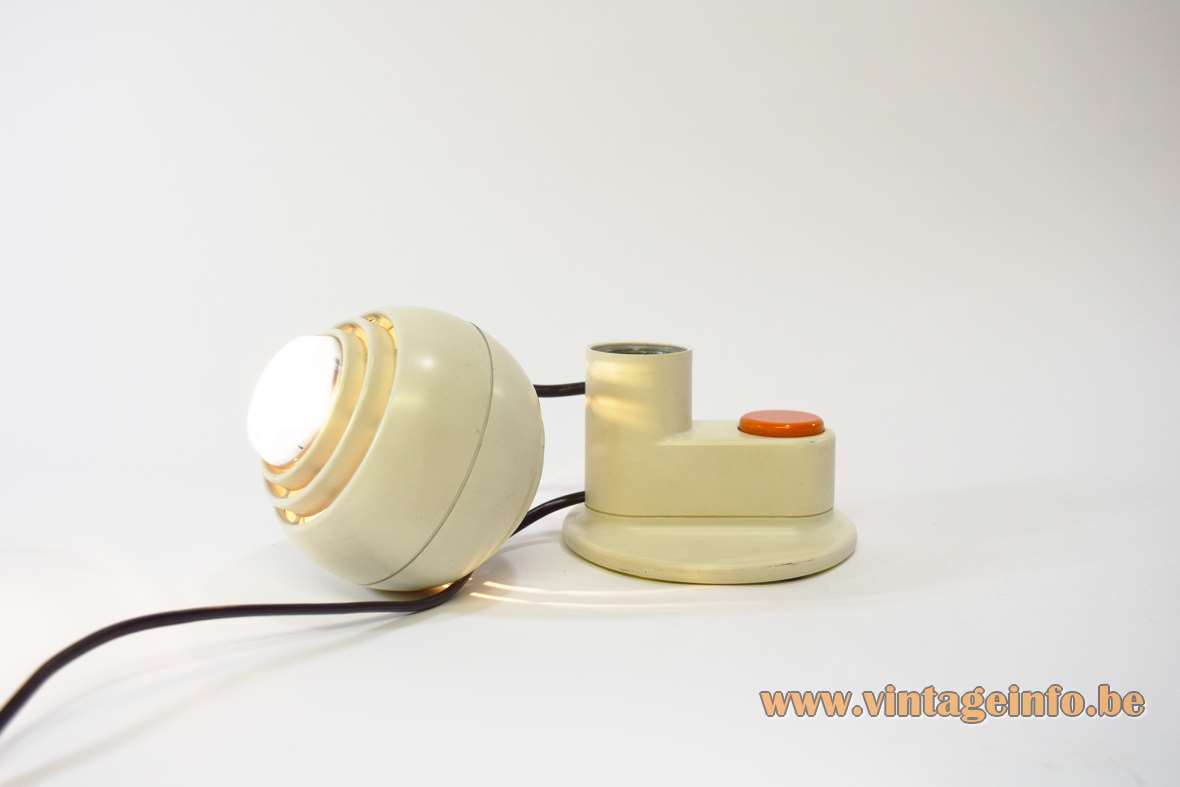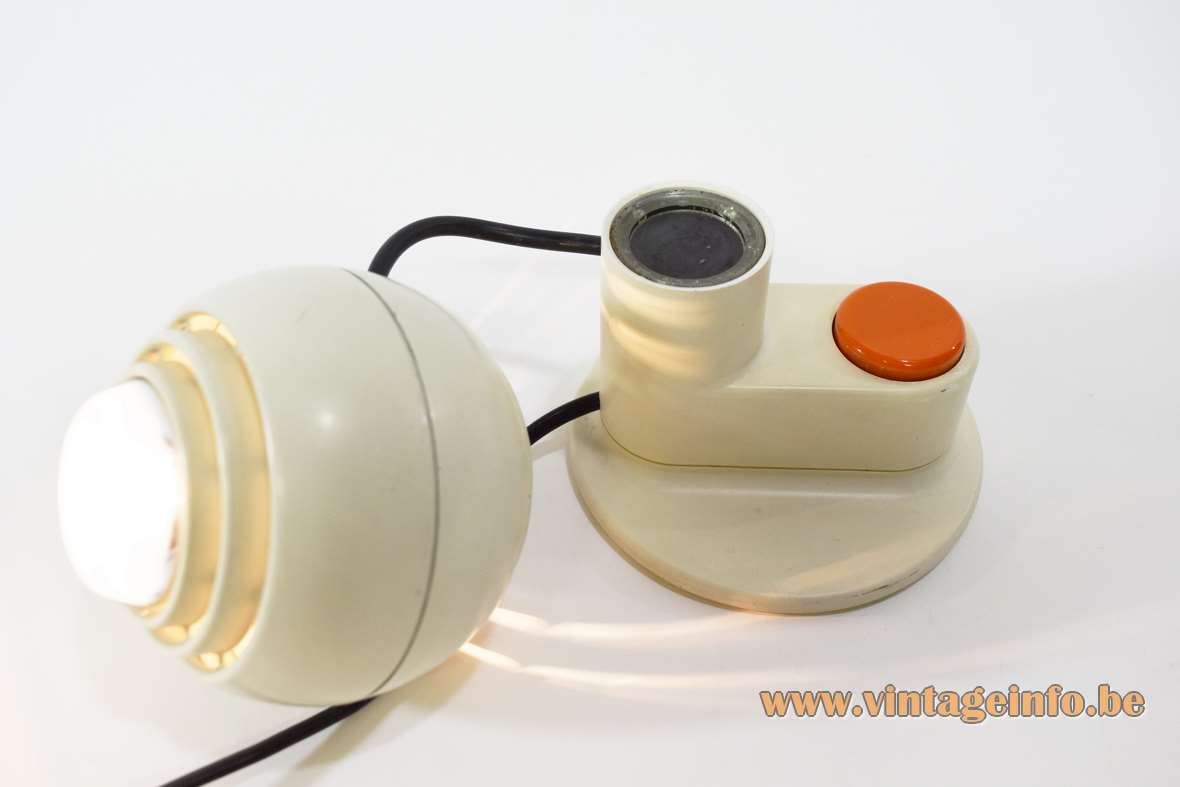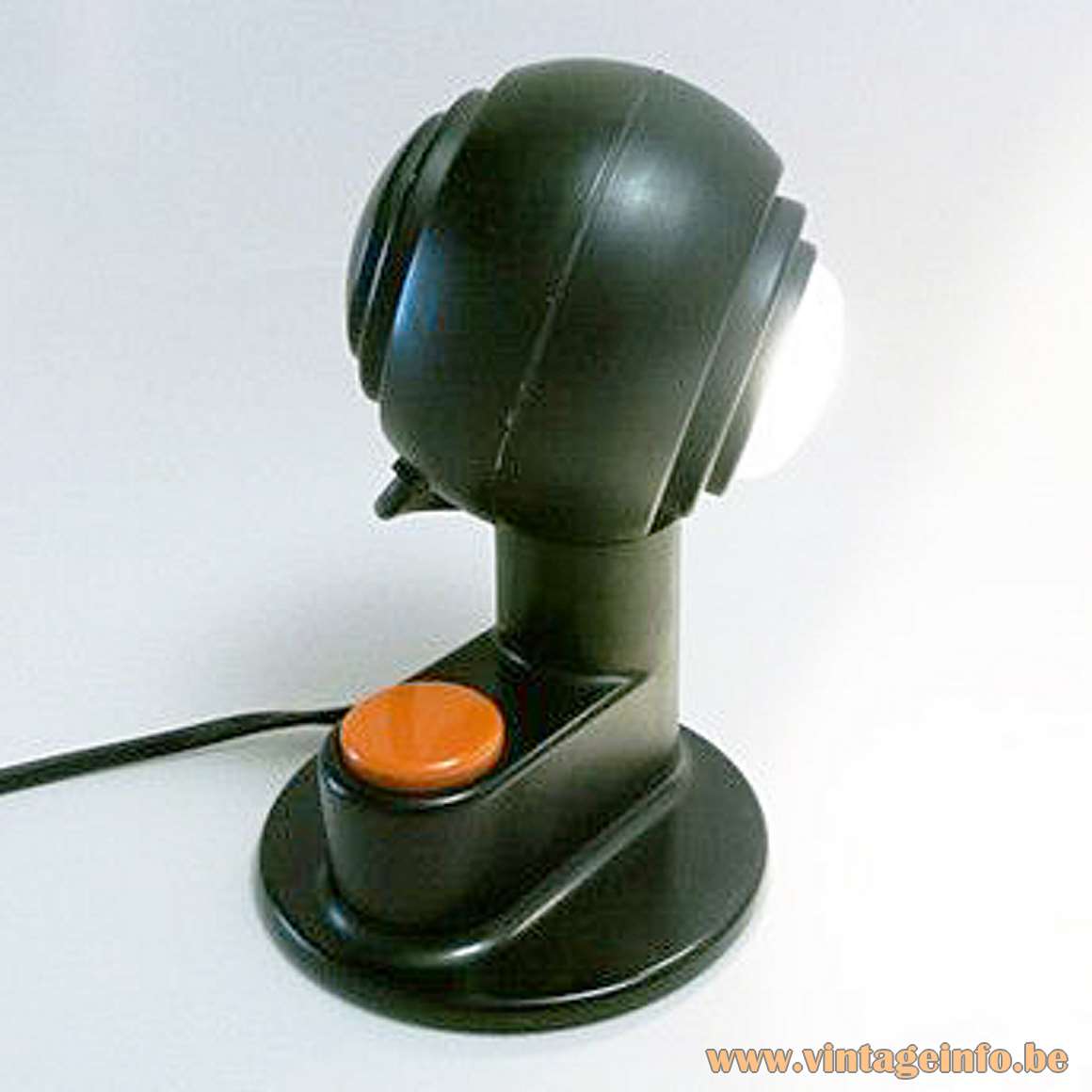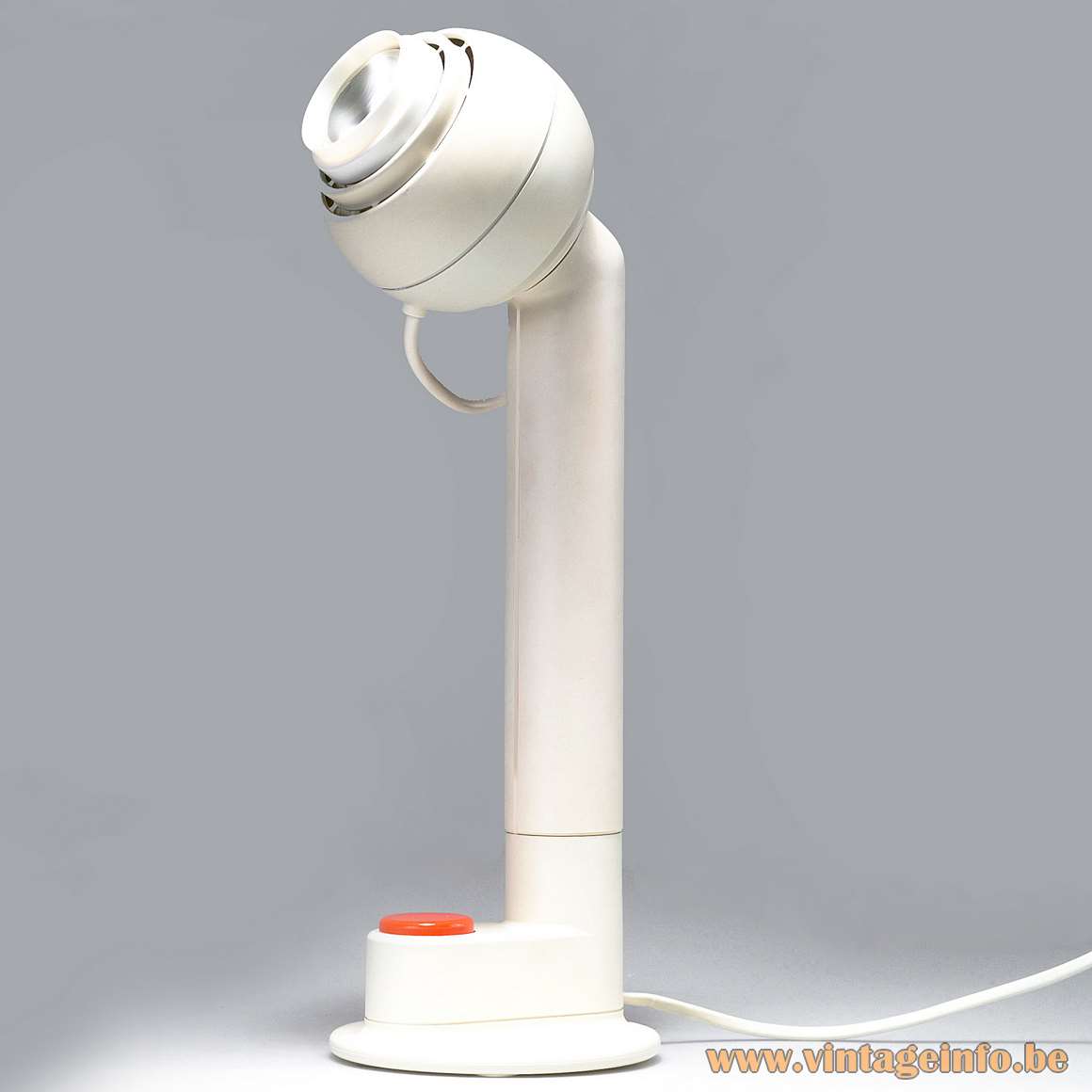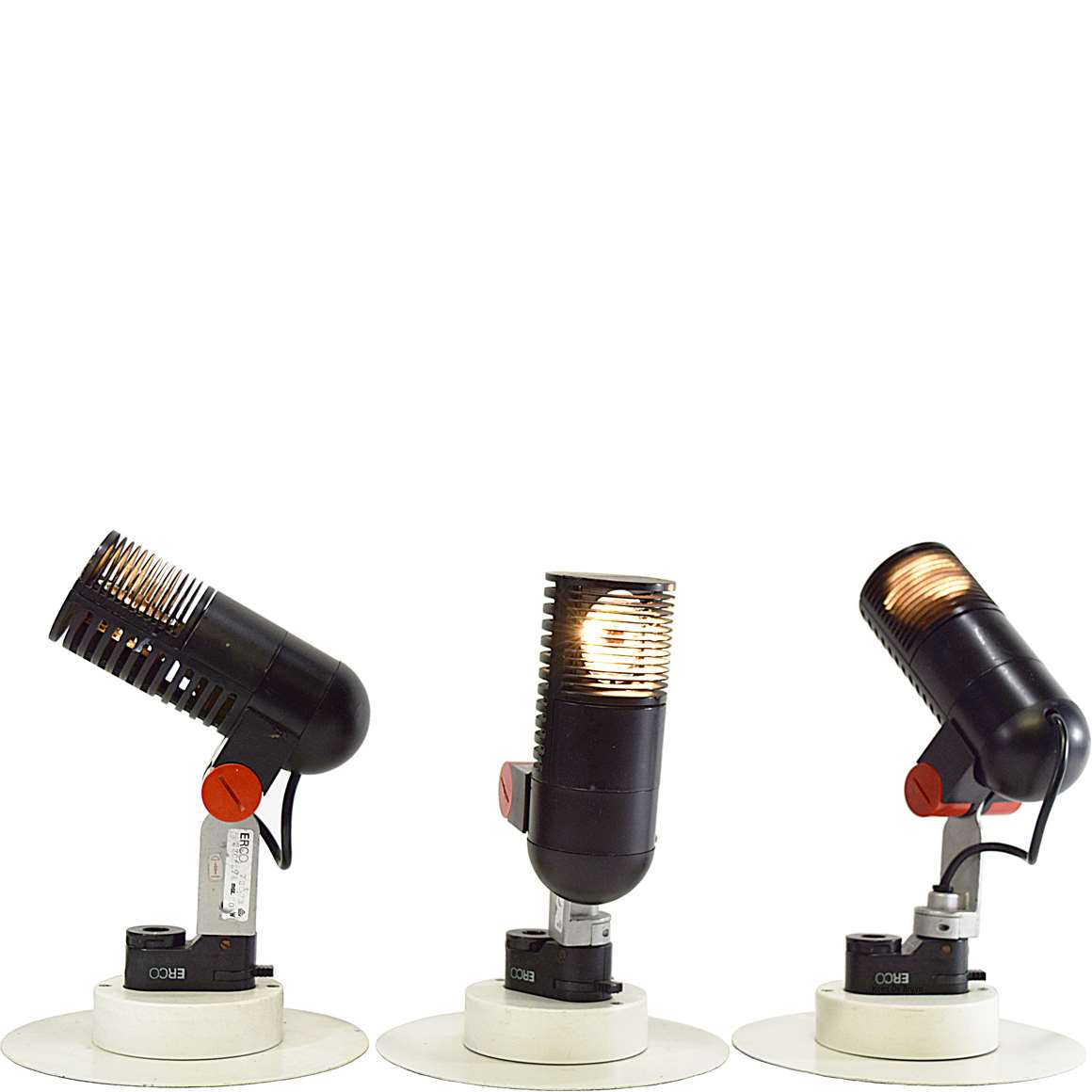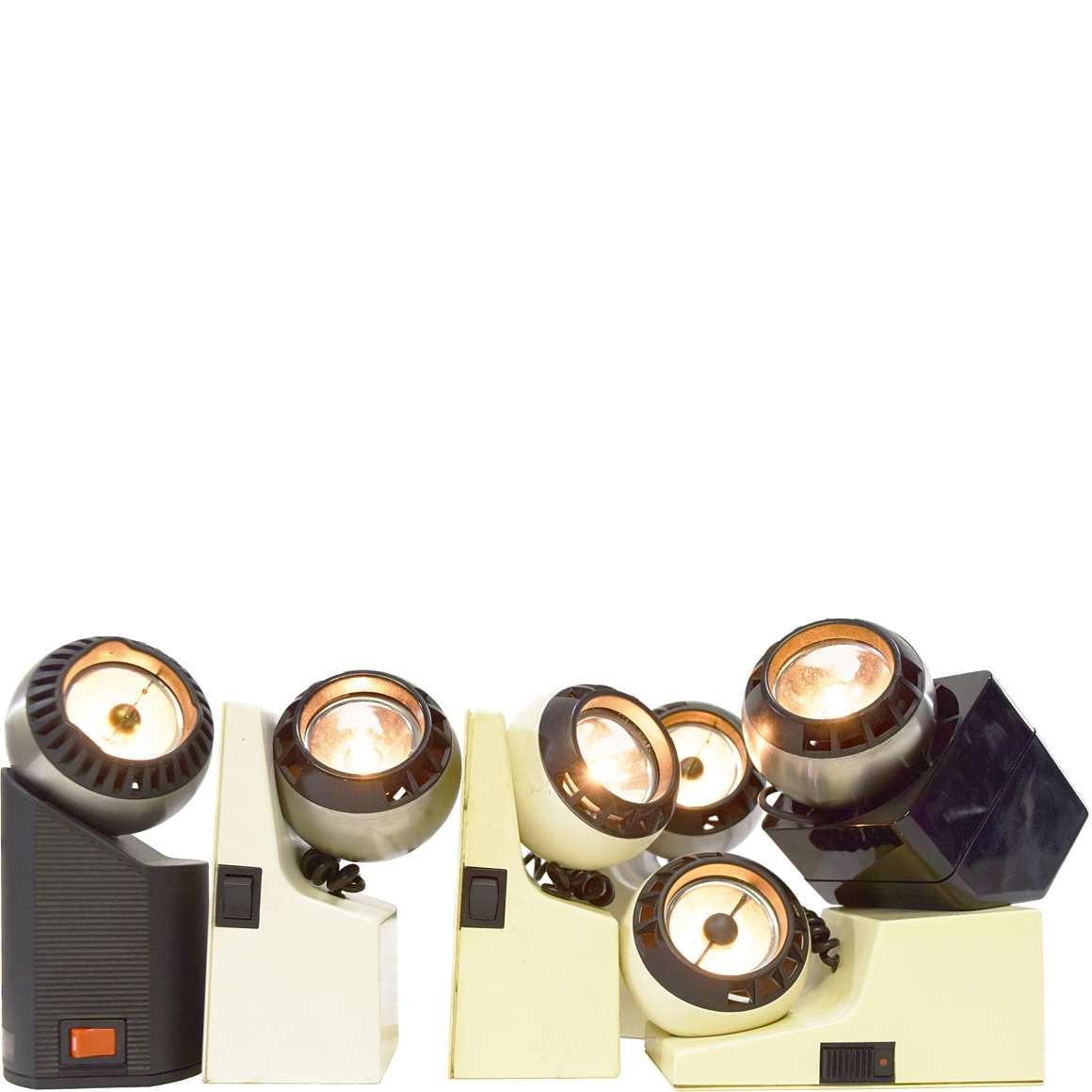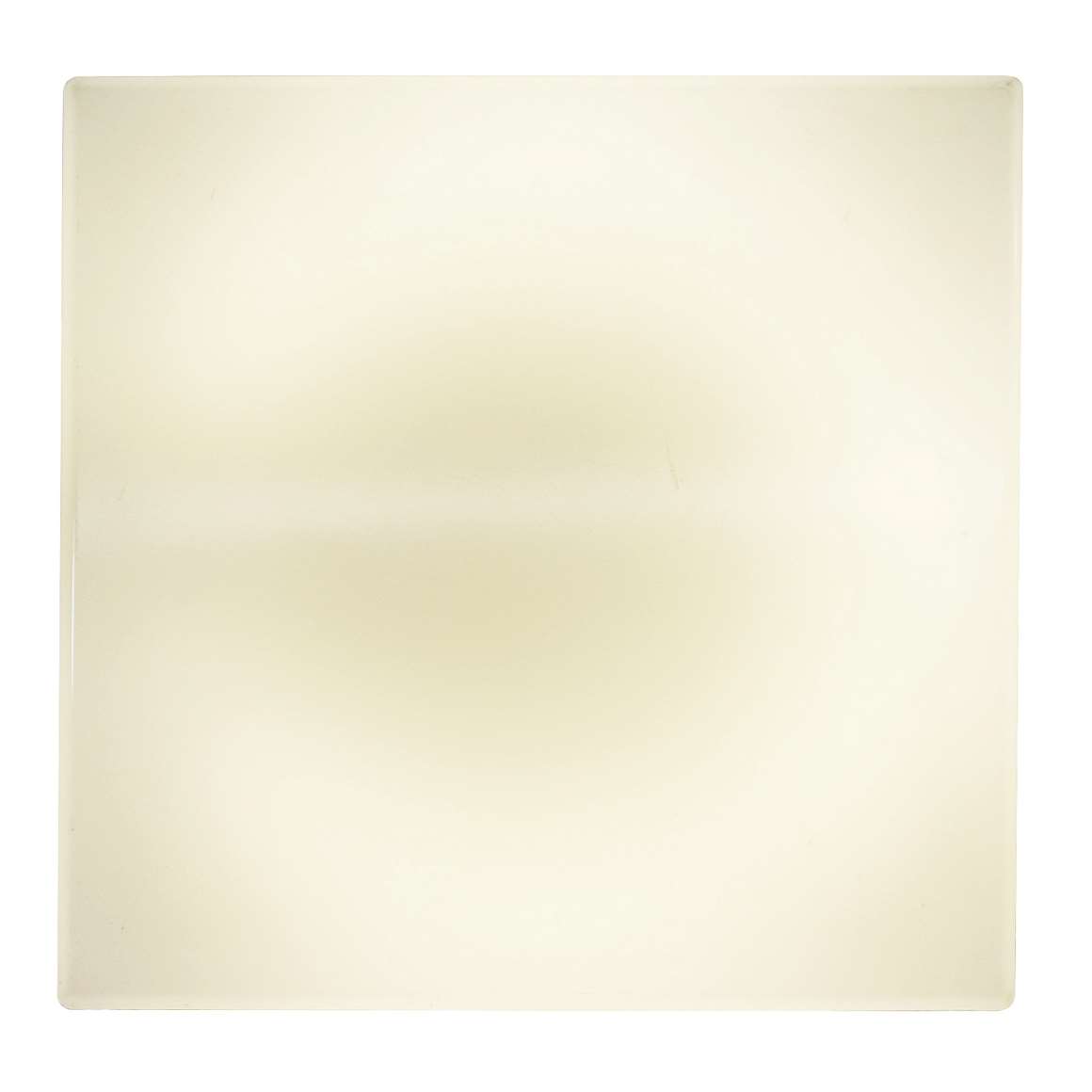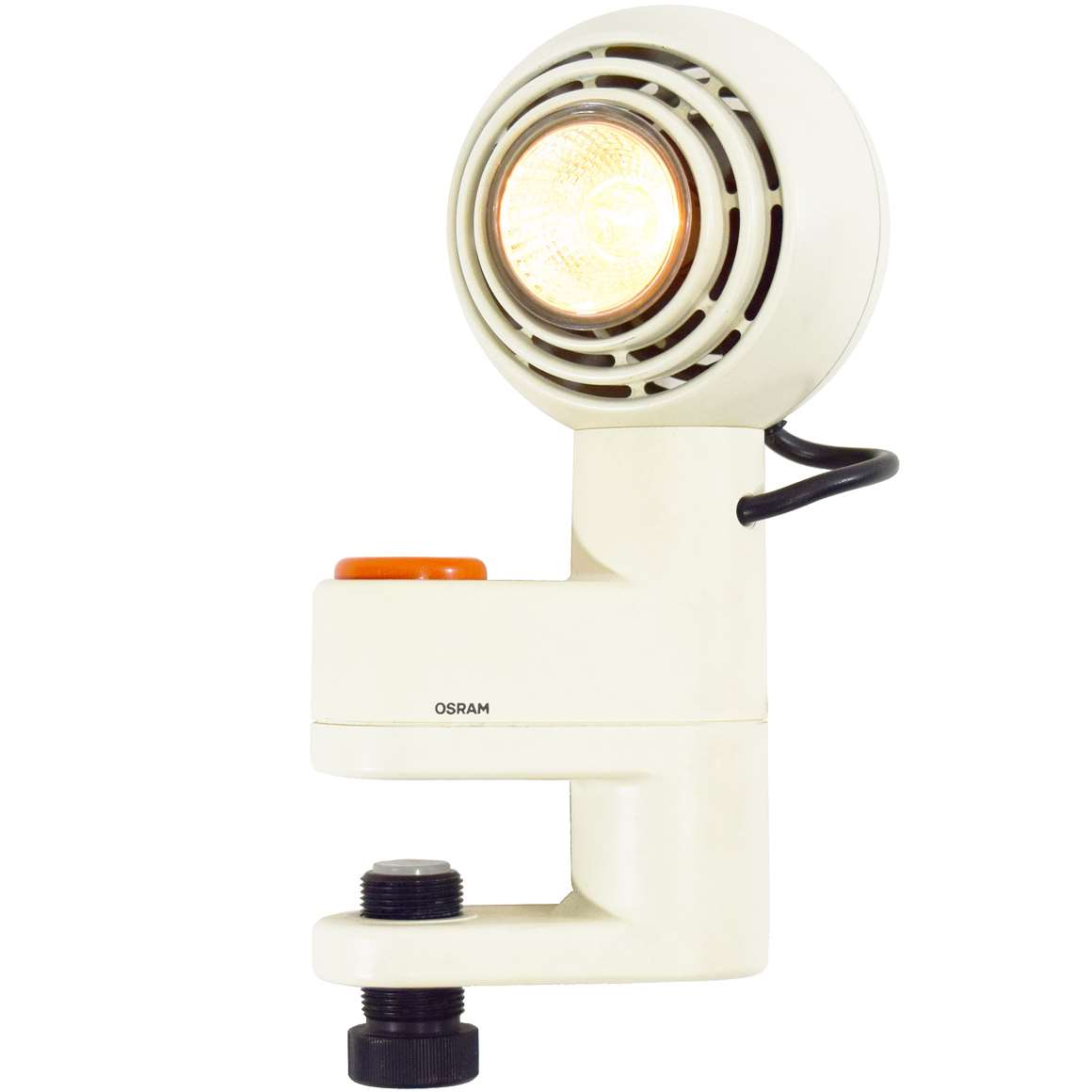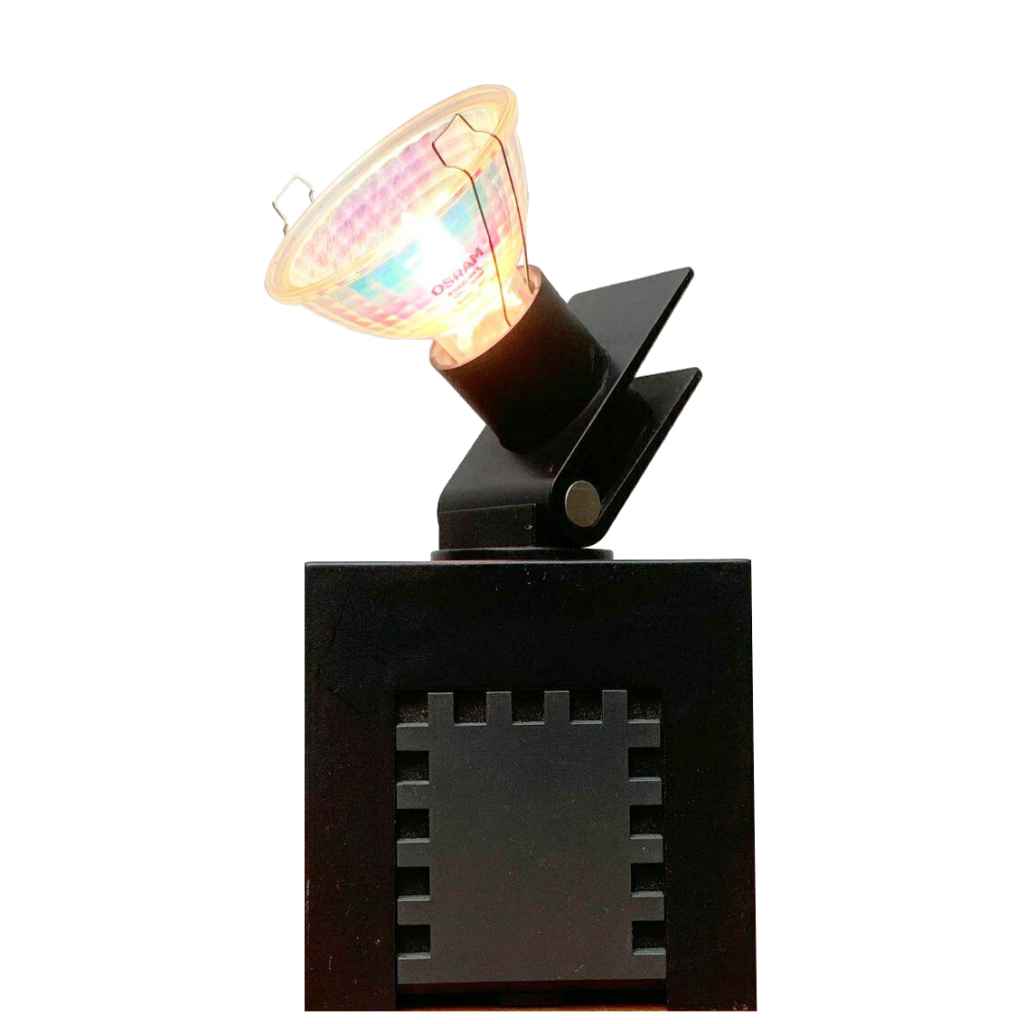Links (external links open in a new window)
Wikipedia about Norbert Schlagheck
Biography of Herbert H. Schultes on Wikipedia
Schlagheck Schultes Design in the MoMA museum
Company profile of OSRAM – Wikipedia
110 years of OSRAM – History of the company
Vintageinfo
OSRAM Concentra Agilo Table Lamp – T40, 42 601
Materials: White painted metal and plastic base with a magnet. Built-in orange plastic button switch. White painted iron globe lampshade. Bakelite E14 socket.
Height: 19 cm / 7.48”
Globe: ∅ 10 cm / 3.93”
Base: ∅ 12,3 cm / 4.84”
Electricity: 1 bulb E14, 1 x 40 wattmaximum, 110/220 volt.
Any type of light bulb can be used, but a spot bulb is preferred.
Period: 1970s – Mid-Century Modern.
Designer: Schlagheck Schultes Design GmbH in 1977. (Norbert Schlagheck and Herbert H. Schultes).
Manufacturer: OSRAM, Munich, Germany.
Other versions: The OSRAM Concentra Agilo table lamp was made in black or white, all with an orange button. This lamp is model T40, 42 601. It received the iF Design Award for product in 1977. The clamp lamp, model 42 701 can be found over here on Vintageinfo. Several models exists. Also a wall lamp was produced.
Magnetic lamps were not a new product of the Osram company. The OSRAM Minispot was introduced in 1972. It was a design by OSRAM Design, the internal design team. Also, in 1982 Dieter Witte designed a magnetic lamp for OSRAM. You can find these table lamps here on Vintageinfo: OSRAM Minispot.
Schlagheck Schultes Design GmbH
Schlagheck Schultes Design GmbH was founded by Norbert Schlagheck (1925 -2002) and Herbert H. Schultes (born 1938). In 1967 the two architects started their cooperation. They got to know each other at the Siemens AG factory in the 1960s. On the basis of a cooperation between Siemens AG and AGFA Gevaert AG, Norbert Schlagheck, together with his colleague Herbert H. Schultes, began to assume design tasks for the AGFA.
In the first few years, the Schlagheck Schultes Design GmbH has increasingly developed into an internationally operating agency with customers from all product segments. A whole series of design classics spring from this period and set standards in the field of German design.
Numerous awards and prizes, as well as the inclusion of products in the Museum of Modern Art (MoMA) in New York, testify to this creative and highly successful period.
Norbert Schlagheck
Norbert Schlagheck was born in Wegberg-Beeck in Germany in 1925. He graduated in 1948 as an industrial designer at the Folkwang-Schule für Gestaltung der Stadt Essen. Today the Folkwang University of the Arts (Folkwang Universität der Künste) in the city of Essen.
In the period 1954-1967 he worked as a designer at Siemens AG. During this time he was jointly responsible for the establishment of a functional design department and he was department head of the household design group.
In 1961 he received the scholarship and the prize of the cultural circle in the Federation of German Industries (Bundesverband der Deutschen Industrie).
In 1967, he founded Schlagheck & Schultes Design GmbH with Herbert H. Schultes.
From 1967 until 1970 he was head of the industrial design department at the Kölner Werkschulen (Cologne Academy of Fine and Applied Arts). In 1972 he became professor for Industrial Design at the Munich University of Applied Sciences (MUAS).
In 1996, the company “Schlagheck Design ” and “Schlagheck & Partner Modell- und Formenbau GmbH Designwerkstätten ” were merged into today’s Schlagheck Design GmbH. It is headquartered in Oberhaching near Munich. At the same time Norbert Schlagheck transferred the management to his son Julian Schlagheck.
From 1997 until 2001 he continued to work as a freelance designer and was a jury member in the award of the Bavarian State Prize. Norbert Schlagheck passed away in Grafrath near Munich in 2002.
Herbert H. Schultes
Herbert H. Schultes was born in 1938. After studying engineering and design in Munich, where he graduated as a fellowship of the cultural circle in the Federation of German Industries (Bundesverband der Deutschen Industrie), he worked as a designer at Siemens AG from 1961 until 1967. He was assistant to chief designer Edwin A. Schricker.
In 1967, he founded Schlagheck Schultes Design (now Schlagheck Design) together with Norbert Schlagheck.
Herbert H. Schultes became chief designer of Siemens AG in 1985. Under his direction the design department was separated from the trade fair construction department of the group in 1997 and was initially known as Siemens Design & Messe GmbH, from 1999 as Designafairs GmbH. From 1997 until 2000 Schultes was managing director of the company.
Herbert H. Schultes was involved in setting up the course of studies in industrial design at the University of Applied Sciences (Hochschule für angewandte Wissenschaften) in Munich, after which he taught industrial design at the Cologne Academy of Fine and Applied Arts, the Kölner Werkschulen.
Today, Herbert Schultes works in his studio near Munich.
OSRAM
OSRAM Profile – from the OSRAM-website
Based in Munich, Germany, OSRAM is a globally leading lighting manufacturer.
It has a history dating back more than 100 years. The portfolio ranges from high-tech applications based on semiconductor technology, such as infrared or laser lighting, to smart and connected lighting solutions in buildings and cities.
OSRAM had more than 24,000 employees worldwide at the end of fiscal year 2016 (September 30). It generated revenue of almost €3.8 billion in that fiscal year. The company is listed on the stock exchanges in Frankfurt and Munich.
In 1906 the OSRAM incandescent lamp was developed by Carl Auer von Welsbach.
In 1919 AEG (Allgemeine Elektrizitäts-Gesellschaft), Siemens & Halske (S & H) and Deutsche Gasglühlicht AG (Degea, German Gas Light Company) formed a company for incandescent lamp production under the name OSRAM.
The name is derived from osmium and wolfram. Two elements that were commonly used for lighting filaments at the time the OSRAM-company was founded.
